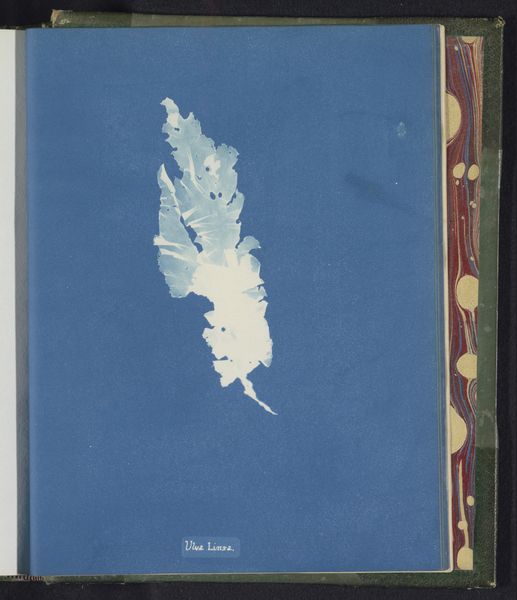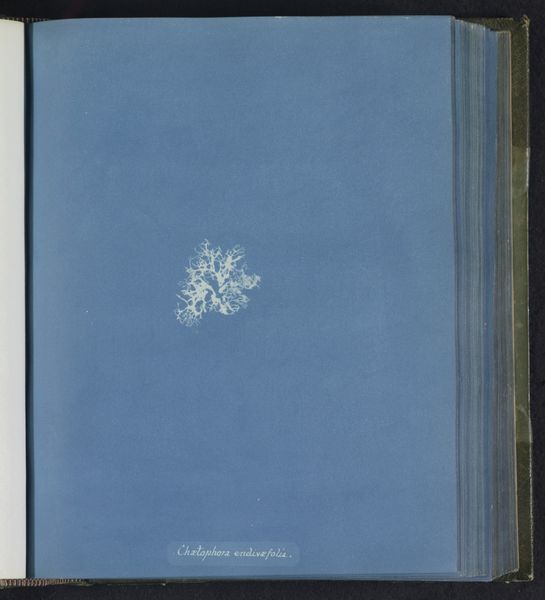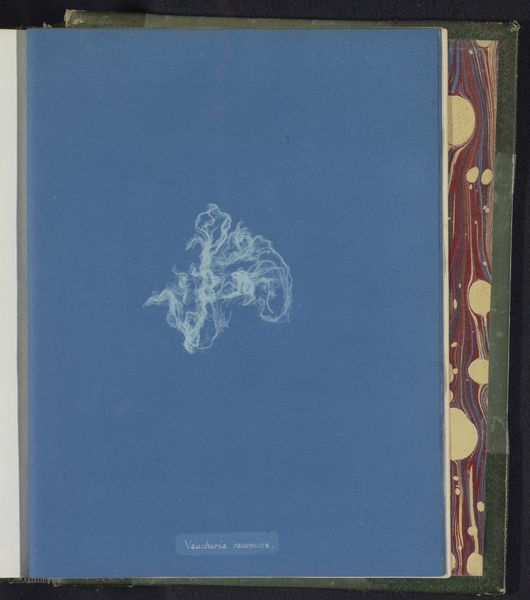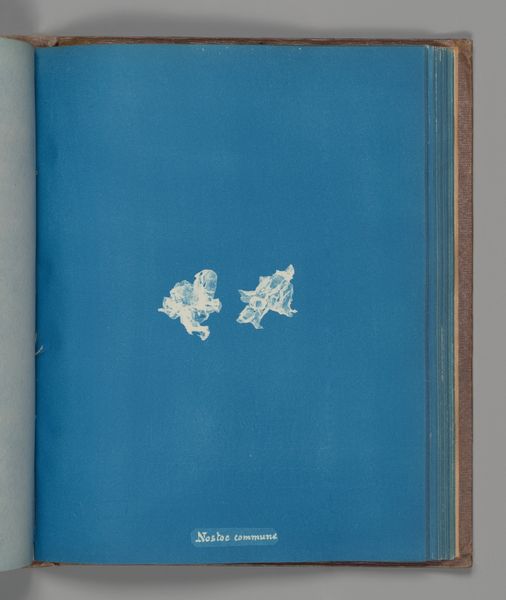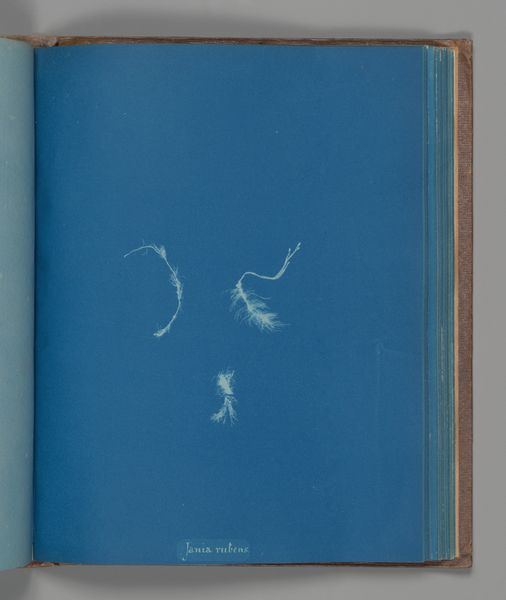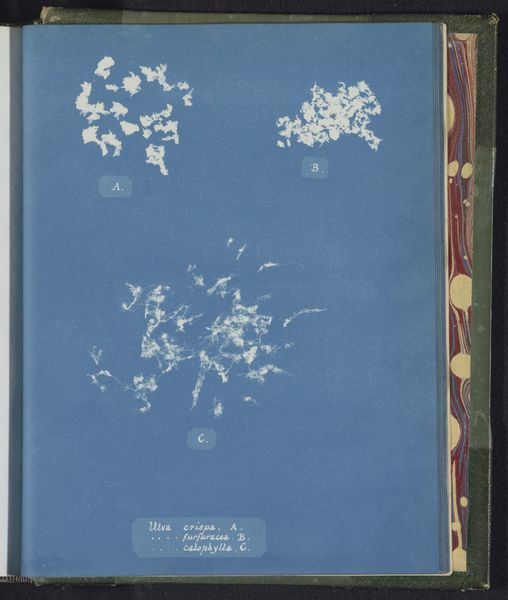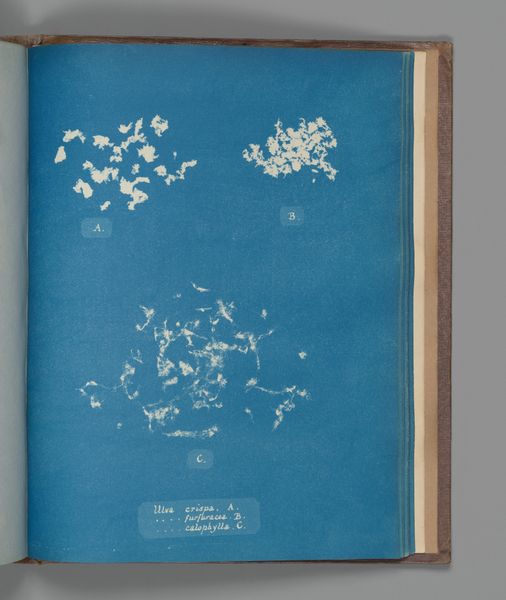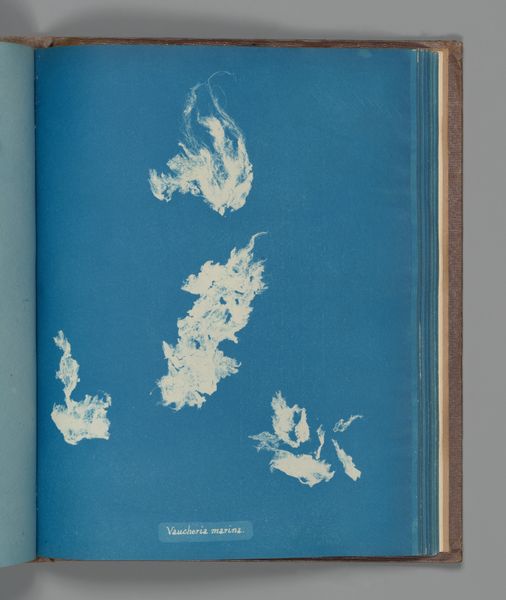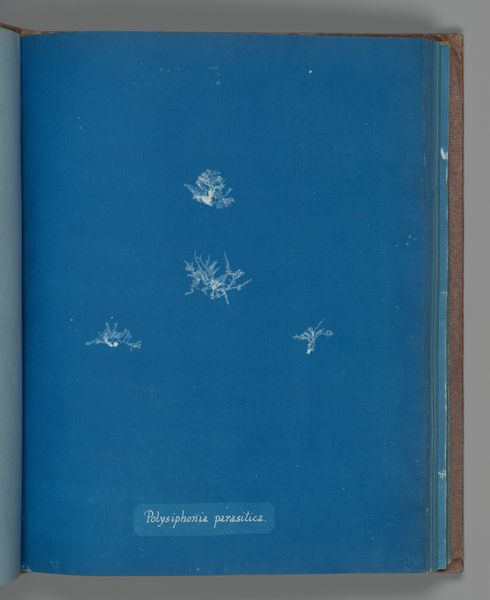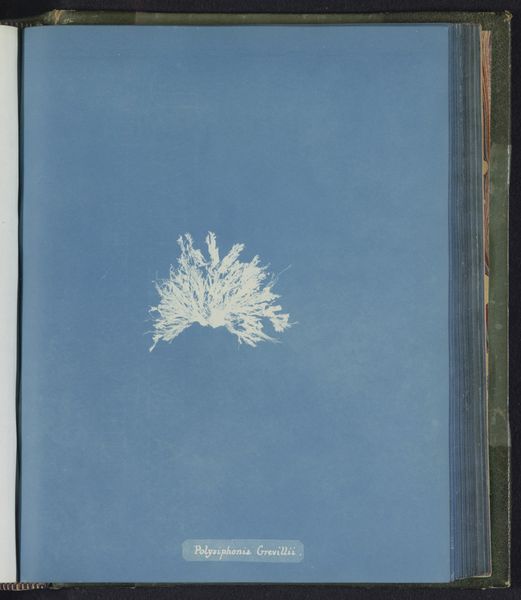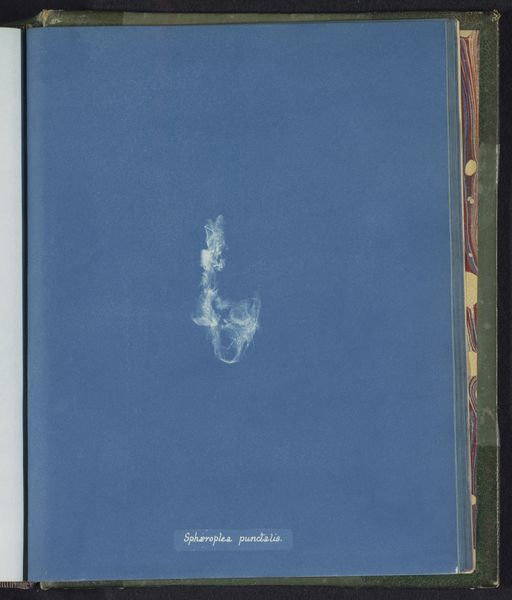
print, paper, cyanotype, photography
#
aged paper
#
still-life-photography
# print
#
personal journal design
#
paper
#
cyanotype
#
photography
#
personal sketchbook
#
journal
#
fading type
#
geometric
#
delicate typography
Dimensions: height 250 mm, width 200 mm
Copyright: Rijks Museum: Open Domain
Anna Atkins created this cyanotype photogram, Trentepohlia pulchella, as part of her lifelong dedication to botany and photography. Living in a Victorian England that relegated women to the domestic sphere, Atkins used her access to scientific circles to explore and document the natural world, publishing "Photographs of British Algae" in 1843, considered the first book illustrated with photographic images. Atkins' work intersects art and science. The cyanotype process, with its distinctive Prussian blue, creates a ghostly, ethereal quality that transforms scientific documentation into art. The stark white impressions of algae against the deep blue evoke a sense of isolation, reflecting the artist’s own position as a woman in the male-dominated field of science. The choice of algae, often overlooked, resonates with the historical context of women's contributions being similarly undervalued. Ultimately, Atkins' cyanotypes are a testament to the power of art to both document and reimagine our relationship with the natural world, and, hint at a new understanding of women in science.
Comments
No comments
Be the first to comment and join the conversation on the ultimate creative platform.
